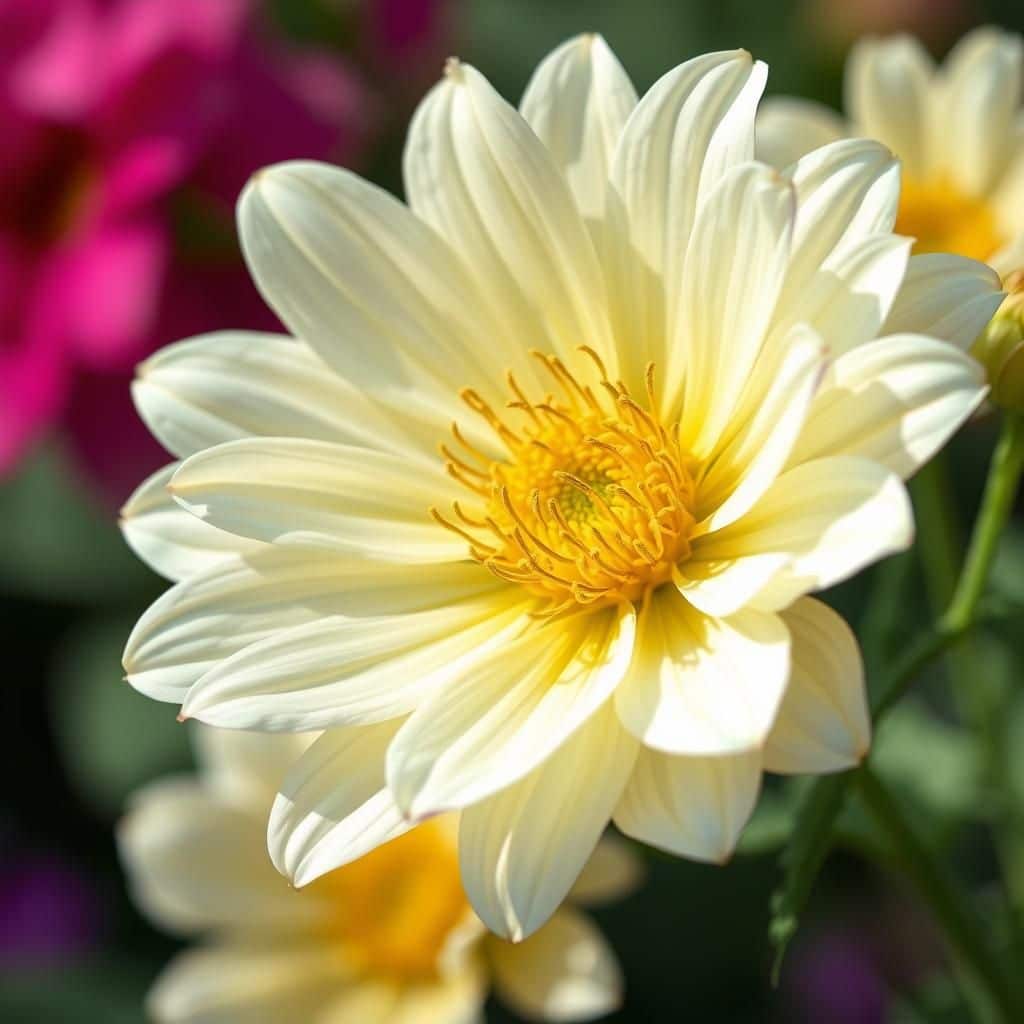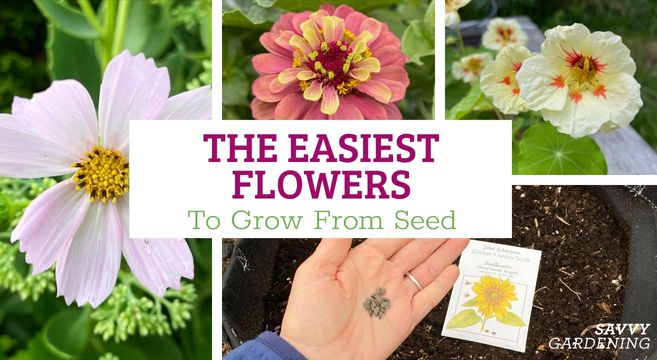What is the easiest flower to bloom all summer? Discover Top Picks for Your Garden

Summer is the perfect time to enjoy a vibrant garden, filled with colors and fragrances that brighten any outdoor space. When it comes to choosing flowers that thrive throughout the warmer months, some varieties stand out for their ease of care and impressive blooms. In this article, we will explore the easiest flowers to grow that will continuously blossom all summer long. From cheerful sunflowers to delicate zinnias, these top picks not only add beauty to your garden but also enhance the overall environment for pollinators. Let’s dive into the best options to create a stunning, low-maintenance summer garden.
The Easiest Flower to Bloom All Summer
One of the easiest flowers to bloom all summer is the marigold. Known for its vibrant colors and resilience, the marigold thrives in various climates and requires minimal maintenance. These flowers can tolerate heat and drought, making them perfect for summer gardens. They attract beneficial insects, such as bees and butterflies, while deterring pests from other plants. Their ability to bloom continuously throughout the season and their wide range of colors—from bright oranges to deep yellows—make marigolds a favorite among both novice and experienced gardeners. With just a bit of sunlight and well-drained soil, marigolds will flourish, providing long-lasting beauty to any outdoor space.
Why Choose Marigolds for Summer Gardening?
Marigolds are a fantastic option for summer gardening due to their hardiness and long blooming season. They can withstand harsh summer conditions, including intense heat and dry spells, which often challenge other flowers. Their vibrant blossoms can last until the first frost, offering a burst of color when many plants have faded. Additionally, marigolds require low maintenance, making them suitable for gardeners who may not have extensive time or experience. This resilience and ease of care make marigolds an ideal selection for adding allure to summer landscapes.
Other Easy Summer-Blooming Flowers
In addition to marigolds, there are other easy-care flowers that can bloom throughout the summer. These include zinnias, cosmos, petunias, and sunflowers. Zinnias are known for their brilliant hues and can thrive in various soil types. Cosmos provide a delicate, airy aesthetic and are highly attractable to pollinators. Petunias add a soft, cascading look to gardens, while sunflowers bring towering beauty and warmth. Each of these flowers is relatively straightforward to grow and can keep blooming with minimal effort.
Sunlight and Soil Requirements for Summer Flowers
Most summer-blooming flowers, including marigolds, thrive in full sunlight and well-drained soil. A minimum of 6 hours of direct sunlight per day is necessary for optimal growth. This exposure not only encourages blooming but also helps develop stronger plants. When it comes to soil, a mixture that's loamy and rich in organic matter provides a fertile environment for these flowers to establish themselves. Adding compost can greatly enhance soil quality, promoting healthy root systems and vibrant blooms throughout the summer.
Watering Practices for Summer Flowers
Effective watering practices are crucial to maintaining the health of summer flowers. While most summer-blooming plants are drought-tolerant, they still need regular watering during dry spells. It's best to water deeply and less frequently, encouraging the roots to grow deeper into the soil. Morning is the ideal time for watering, as it allows the foliage to dry throughout the day, reducing the risk of fungal diseases. Keeping an eye on the soil moisture levels can guide gardeners on when to water, ensuring flowers remain vibrant all summer long.
Pest Management for Summer-Blooming Flowers
Managing pests is an important aspect of caring for summer flowers. Marigolds, for example, are known for their pest-repelling properties, making them excellent companions in the garden. Utilizing natural pest management strategies, such as introducing beneficial insects (like ladybugs) or using organic sprays, can keep harmful pests at bay. Regularly inspecting plants for signs of infestation allows for early intervention, ensuring that flowers remain healthy and bloom without interruption.
| Flower | Bloom Colors | Sunlight Needs | Watering Frequency |
|---|---|---|---|
| Marigold | Yellow, Orange | Full Sun | Weekly |
| Zinnia | Red, Pink, Yellow | Full Sun | Weekly |
| Petunia | Varied | Full Sun | Twice a Week |
| Cosmos | White, Pink | Full Sun | Weekly |
| Sunflower | Yellow | Full Sun | Weekly |
What is the easiest flower to grow for beginners?

The easiest flower to grow for beginners is the marigold. Marigolds are known for their hardiness and ability to thrive in various conditions, making them an ideal choice for novice gardeners. They come in vibrant colors that can brighten up any garden and are also known for their pest-repellent properties. Here’s a detailed look at the marigold and other easy flowers for beginners.
Growing Conditions for Marigolds
Marigolds are very adaptable and can grow in a wide range of growing conditions. Here are some key aspects to consider:
- Light Requirements: Marigolds prefer full sun, so plant them in spots that receive at least 6 hours of sunlight daily.
- Soil Type: They thrive in well-drained soil but can tolerate poorer soil conditions.
- Watering: Regular watering is necessary, but avoid overwatering as it can lead to root rot.
Choosing the Right Variety
Marigolds come in several varieties, each with unique features. Here are popular choices for beginners:
- French Marigold: Smaller flowers, typically bright yellow and orange, suitable for borders.
- African Marigold: Larger blooms with a taller growth habit, perfect for creating a bold statement.
- Signet Marigold: Known for their smaller, edible flowers, ideal for culinary use.
When to Plant Marigolds
Timing is crucial when growing marigolds. Here’s how to time your planting:
- Last Frost Date: Plant marigolds after the last frost in your area, usually in spring.
- Starting Indoors: For earlier blooms, consider starting seeds indoors 6–8 weeks before the last frost date.
- Direct Sowing: Alternatively, you can sow the seeds directly in the garden when the soil warms up.
Care and Maintenance
Maintaining healthy marigolds requires minimal effort. Ensure the following:
See also:
- Fertilization: Use a balanced fertilizer sparingly; too much can reduce flower quality.
- Deadheading: Remove spent flowers regularly to encourage more blooms.
- Pest Management: Look for aphids or spider mites; marigolds naturally deter some pests.
Additional Easy Flowers for Beginners
While marigolds are a great choice, other flowers are also easy to grow. Consider these options:
- Zinnias: Colorful, drought-resistant flowers perfect for cutting gardens.
- Sunflowers: Tall and cheerful blooms that attract pollinators.
- Cosmos: Light and airy flowers that thrive in poor soil and are low maintenance.
What is the lowest maintenance flower?
:max_bytes(150000):strip_icc()/low-maintenance-flowers-you-cant-kill-4864031_final-da20e03588614b1f8954786b026d820e.png)
One of the lowest maintenance flowers is the Marigold (Tagetes). Marigolds are known for their vibrant colors and ability to thrive in various conditions. They require little water, can tolerate poor soil, and are resistant to many pests, making them an excellent choice for gardeners looking for hardy flowers. Marigolds bloom continually from spring until frost, providing long-lasting color with minimal effort. Their adaptability and resilience also make them suitable for both containers and garden beds.
Planting Marigolds
Planting Marigolds is straightforward and requires minimal effort. They thrive in full sun and can be sown directly into the ground or started indoors:
- Choose a location with well-drained soil and full sun exposure.
- Sow seeds directly into the garden after the last frost, or start indoors about 6-8 weeks before the last frost.
- Space the seeds or seedlings about 8 to 12 inches apart for optimal growth.
Watering Requirements
Marigolds have low watering requirements, which significantly reduces maintenance. They prefer to be allowed to dry out between waterings:
- Water the plants thoroughly when the top inch of soil feels dry.
- Avoid overwatering, as this can lead to root rot.
- During extremely hot periods, a deep watering once a week is sufficient.
Pest Resistance
One of the reasons Marigolds are considered low maintenance is their natural pest resistance. They can deter many garden pests:
- They produce compounds that repel harmful insects like aphids, nematodes, and whiteflies.
- Planting them alongside vegetables can help protect those plants.
- While they can attract certain pollinators, they are generally not favorites for pests.
Soil Requirements
Marigolds are not particular about soil quality, which makes them easy to grow in various settings:
- They thrive in poor to average soil, making them suitable for neglectful gardeners.
- Adding a bit of compost at planting can enhance their growth but is not required.
- Make sure the soil is well-draining to avoid waterlogging.
Blooming Period
Marigolds have a lengthy blooming period, providing ongoing beauty with little care:
- They usually bloom from late spring until the first frost, offering months of vibrant flowers.
- Regular deadheading can promote additional blooms but is often optional.
- Their bright colors can attract beneficial insects and add aesthetic value to any garden.
What flowers grow best in full hot sun?
:max_bytes(150000):strip_icc()/best-annual-flowers-for-full-sun-1401931-1e66f71659c148858ab4f29a6376eb34.jpg)
One of the most essential factors when selecting flowers for a garden in regions that receive full, hot sun is their ability to withstand high temperatures and prolonged exposure to sunlight. Here are some of the best flowers that thrive in these conditions:
1. Marigolds
Marigolds are hardy annuals that can tolerate high temperatures and drought-like conditions. They are known for their vibrant colors and pest-repelling properties. They are easy to grow and require minimal maintenance.
- Sunlight Requirements: Marigolds thrive in full sun, requiring at least 6 hours of direct sunlight daily.
- Soil Type: They prefer well-drained soil and can tolerate poor soil conditions.
- Watering Needs: Once established, they are drought-tolerant and only need watering when the soil is dry.
2. Zinnias
Zinnias are colorful annuals that love the heat and sun. They come in various shapes and sizes, making them versatile for garden design. Additionally, they are excellent for attracting pollinators.
- Sun Exposure: Zinnias require full sun and can thrive in up to 8 hours of sunlight.
- Soil Preferences: They prefer rich, well-draining soil but can adapt to different soil types.
- Maintenance: Regular deadheading will encourage more blooms throughout the growing season.
3. Coneflowers (Echinacea)
Coneflowers are perennial plants known for their resilience and ability to flourish in hot climates. They are low-maintenance and offer a stunning visual appeal with their unique daisy-like flowers.
See also:
- Light Requirements: Coneflowers flourish in full sun, needing at least 6 hours of sunlight.
- Soil Needs: They thrive in poor to average soil, as long as it is well-drained.
- Watering: They are drought-tolerant once established, requiring watering primarily in dry spells.
4. Sedum
Sedum, commonly known as stonecrop, is a succulent that can thrive in hot, dry conditions and requires very little care. It has fleshy leaves that store water, making it an excellent option for sunny spots.
- Sunshine Requirements: Sedum plants prefer full sun exposure for optimal growth.
- Soil Type: They do best in well-draining soil and can survive in sandy or rocky conditions.
- Watering: Minimal watering is needed, especially during dry seasons, giving them their drought-resistant characteristic.
5. Lantana
Lantana is a tropical perennial that excels in sunny, hot environments. It produces clusters of small flowers that come in various colors and is highly attractive to butterflies.
- Sunlight Exposure: Lantanas thrive in full sun and prefer at least 6 hours of direct sunlight.
- Soil Preferences: They can grow in various soil types but perform best in well-draining soil.
- Watering Needs: Lantanas are drought-tolerant and should be watered sparingly after establishing.
What are the easiest flowers to grow in the summer?
:max_bytes(150000):strip_icc()/GettyImages-1366343015-d00ff618ffe1463e840366cdc286315c.jpg)
The easiest flowers to grow in the summer are often those that can thrive in warm weather, require minimal upkeep, and offer vibrant colors to enhance any garden or outdoor space. Here are some of the best options:
1. Marigolds
Marigolds are known for their bright, cheerful colors and their ability to thrive in sunny conditions. They are very disease-resistant and can tolerate poor soil, which makes them perfect for beginner gardeners.
- Flower Type: Annual
- Sunlight Requirements: Full sun
- Watering Needs: Moderate
2. Zinnias
Zinnias are another fantastic choice for summer gardens. They come in various shapes, sizes, and colors, attracting butterflies and other pollinators. They are also resistant to drought and grow quickly.
- Flower Type: Annual
- Sunlight Requirements: Full sun
- Watering Needs: Low to moderate
3. Petunias
Petunias are popular summer flowers that can be found in a wide array of colors. They are easy to grow from seeds or transplants and can spread quickly if cared for properly.
- Flower Type: Annual
- Sunlight Requirements: Full sun to partial shade
- Watering Needs: Moderate; allow soil to dry between watering
4. Sunflowers
Sunflowers are iconic for their height and large, sunny heads. They thrive in full sunlight and can be grown in various soils, making them a low-maintenance option for summer gardens.
- Flower Type: Annual
- Sunlight Requirements: Full sun
- Watering Needs: Moderate; keep soil moist but not waterlogged
5. Cosmos
Cosmos are delicate-looking flowers that are surprisingly hardy. They produce an abundance of blooms and can tolerate a range of soil conditions. Their carefree nature makes them ideal for beginners.
- Flower Type: Annual
- Sunlight Requirements: Full sun
- Watering Needs: Low; water only during prolonged dry spells
Questions from Our Readers
What is the easiest flower to bloom all summer?
Marigolds are considered one of the easiest flowers to bloom all summer. They thrive in full sun and require minimal care, making them an ideal choice for gardeners of all skill levels.
How much sunlight do summer-blooming flowers need?
Most summer-blooming flowers, including petunias and zinnias, require at least 6 to 8 hours of direct sunlight each day to produce vibrant blooms and grow healthily.
What type of soil is best for summer flowers?
Summer flowers typically prefer well-drained soil rich in organic matter. A pH level between 6.0 and 7.0 is generally ideal for optimal growth and flowering.
How often should I water summer-blooming flowers?
Watering summer-blooming flowers should usually be done deeply and infrequently, allowing the topsoil to dry out between waterings. This encourages deeper root growth and overall plant health.
See also:

If you want to read more articles like What is the easiest flower to bloom all summer? Discover Top Picks for Your Garden, we recommend you check out our Flowers category.
Leave a Reply
Related Articles